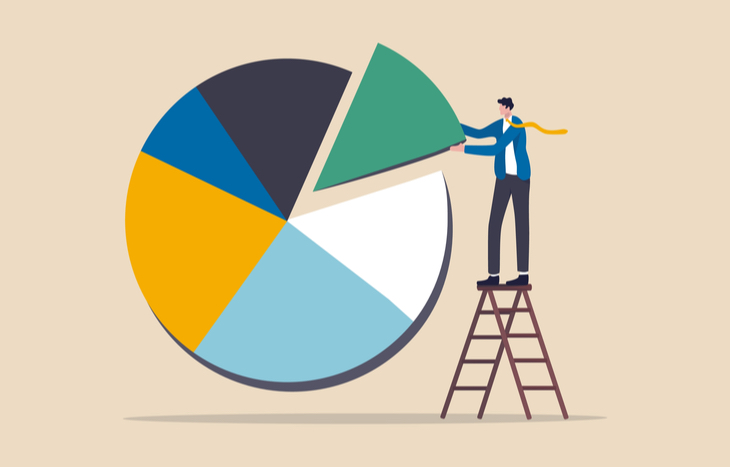What Is a Bond Ladder?

Investing in bonds is typically a long-term exercise. As a result, investors need to be forward-thinking in the types of bonds they invest in. Furtermore, investors must be aware of the changing interest rate environment that determines the value of their long-held bonds. Building a bond ladder is a simple way to optimize a bond portfolio, while protecting against external risks.
As the name implies, a bond ladder is a supportive strategy in which investors layer bonds with different maturity rates into a single portfolio. For example, a standard 10-year ladder would have a bond maturing every year, while the other bonds in the ladder continued to pay coupon payments. Investors can keep the ladder going by reinvesting or letting it expire at a target date.
There are many reasons to build a bond ladder, and it’s a highly successful strategy for fixed-income investors. Here’s a better look at how laddering works and why investors use ladders. Moreover, you will learn how to optimize them to improve cash flow or protect against interest rate risk.

How an Ongoing Bond Ladder Works
Before we delve into how to use bond ladders to achieve certain investment goals, let’s take a look at one. Here’s a simple example of a simple 5-year bond ladder:
- Bond A: $10,000 at 2.1%, purchased today, maturing in year 1
- B: $10,000 at 3.2%, purchased today, maturing in year 2
- C: $10,000 at 3.5%, purchased today, maturing in year 3
- D: $10,000 at 3.5%, purchased in year 2 using Bond A, maturing in year 4
- E: $10,000 at 3.5%, purchased in year 3 using Bond B, maturing in year 5
The purpose of laddering is to provide a rolling opportunity to adapt a fixed-income portfolio to changing market interest rates. There are a few important hallmarks to pay attention to in the above example. Some of the features of an effective ladder include:
- Staggering expiration dates spanning each year of the total ladder
- Better interest rates for longer-term bonds that mature later
- Proceeds from early coupon payments fund future bond purchases
As the older bonds expire, investors can use the proceeds from the recouped par value to reinvest in new long-term bonds with better coupon rates. Or, if interest rates fall, they can reassess investment strategies while benefitting from higher-yield bonds that are still active. In either situation, the ladder reduces the effects of market volatility.
Ladders for Cash Flow Management
The other benefit of a bond ladder is consistency of cash flow. Since most standard bond ladders involve U.S. Treasuries, investors can expect twice-yearly coupon payments based on the bond’s maturity date. Strategic laddering allows investors to spread out coupon payments across the year, for more cash flow consistency. Mixing short- and long-term bonds can exemplify this effect. It’s an enticing prospect for fixed-income investors who want to smooth-out cash flow.
Using Bond Funds as Part of a Ladder Strategy
Buying individual bonds isn’t the only way to capitalize on a bond ladder strategy. Bond funds offer another way to benefit from exposure to debt securities, while safeguarding against interest rate risk. Moreover, bond funds can provide more consistent coupon payments due to the diversified nature of the fund.
To build a bond ladder using ETFs, investors need to look for target date bond funds. For example, the iShares iBonds Dec 2024 Term Treasury ETF (IBTE) and similar funds (IBTF, IBTG, IBTH, etc.) offer a chance to ladder ETFs up to 10 years in advance. Buying these ETFs in equal amounts establishes a bond ladder that investors can use in the same way as a ladder comprised of individual bonds.
The chief benefit of laddering through a bond fund is the exposure offered by ETFs, as opposed to holding single bonds that are more susceptible to interest rate fluctuations and bond market activity. Some investors even find it easier to simply buy into a diversified bond fund, like the Vanguard Total International Bond ETF (BNDX), which serves roughly the same function as a ladder.
Tips for Building a Robust Ladder
For investors seeking to build a bond ladder, there are a few tried and true strategies to look at. These primarily focus on best practices for bond diversification, protecting against interest rate risk and avoiding risky bonds:
- Seek to incorporate a mix of bonds, including both Treasuries and AAA corporate bonds.
- Never incorporate callable bonds into a bond ladder! Callable bonds can break the ladder.
- Shorter ladders are better in poor interest rate environments; longer ones for strong rates.
- Inflation-protected securities can be a strong hedge for ladders in poor rate environments.
The biggest thing to remember is that as bonds mature, investors need to be aware and active in how they choose to use the proceeds. Reinvesting them in bonds can keep the ladder strategy going; however, the current rate environment might demand a pivot. Laddering requires critical thinking.
Ladders Protect Against Interest Rate Risk
While many investors use bond ladders as a way to better-control their income from fixed-income investments, this strategy is also a great hedge against interest rate risk. Laddering bonds gives investors the ability to adapt their strategy with each successive year and adjust their portfolio to protect themselves. Whether through individual bonds or target-date bond ETFs, there are plenty of ways to construct and maintain a ladder that continues to deliver peace of mind.







